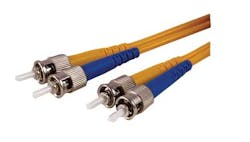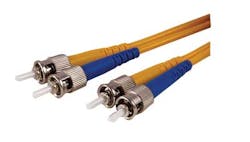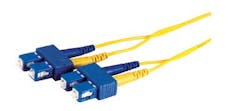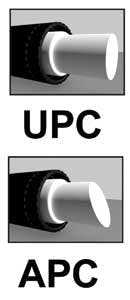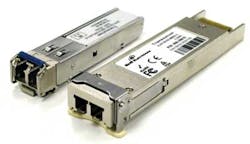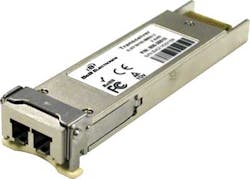Ten things to remember about fiber optics
From the February, 2014 Issue of Cabling Installation & Maintenance Magazine
A lighthearted look at lightwave technology.
By Susan Stanley, B&B Electronics
When planning for a successful fiber-optic network and cabling installation, several principles remain constant but often are overlooked. As a training manager, I see firsthand how easy it is to overlook some of these principles. Maybe-just maybe-a lighthearted view of them will help to keep them at the top of your mind the next time you are involved in a fiber-optic installation. With that in mind, here are 10 things to remember about fiber optics.
1. Consider the nature of thy sandals when thou installeth single-strand fiber.
You wouldn't buy two left shoes, but people often make a similar mistake when they're working with single-strand fiber (SSF). SSF technology allows for the use of two independent wavelengths-often 1310 and 1550 nm-on the same cable. But the transmitters and receivers must be matched correctly. One unit must be a 1310/1550 device (transmitting at 1310 nm, receiving at 1550 nm) and the other must be a 1550/1310 device (transmitting at 1550 nm, receiving at 1310 nm).
The 1550-nm SSF transmitters are more expensive than the 1310-nm transmitters, thanks to the cost of their more-powerful lasers. So network administrators may hope to save money by installing a pair of 1310/1550 devices. But, like mismatched shoes, it doesn't work.
SSF equipment is also more expensive than standard singlemode. But there are situations in which SSF is well worth the investment. For example, if a strand of fiber is available in an existing bundle, deploying SSF products would be cheaper than digging up the cable run to add another bundle of fiber. And in applications in which all the available singlemode fiber capacity is already in use, you can double your fiber capacity by switching to SSF products.
2. Couple not thy singlemode and multimode fiber products, for thou will surely be vexed and tormented thereafter.
It may be tempting to try to make use of legacy cabling or equipment from an older fiber installation. But don't even think about it unless you know exactly what you've got, and what all the pieces are. Singlemode and multimode fiber products are normally incompatible. Some of the major differences would include the wavelengths that the fiber cable can accommodate and the light sources that are being used.
Multimode fiber has a relatively large core size, either 62.5 or 50 microns. The larger core size simplifies connections and allows for the use of less-powerful, less-expensive light sources. But it also lends itself to modal dispersion; the light tends to bounce around inside the core. That limits multimode's useful range to about 2 kilometers.
Singlemode fiber combines powerful lasers and cabling with a narrow core size of 9 microns to keep the light focused. It has a range of up to 130 km, but it is also more expensive.
So let's say you tried to use singlemode products over a multimode cable run. The core size of the fiber cable would be too large. You'd get dropped packets and CRC (cyclical redundancy check) errors, and your customers would not be happy. Singlemode and multimode fiber may have many similarities, but they are not the same thing.
3. Fear not the short singlemode cable run, for in attenuation lieth thy remedy.
Network designers don't always specify multimode for shorter fiber-cable runs. They may choose singlemode instead, and their reasoning may be based upon issues like bandwidth or interoperability with large, complex systems. Depending upon the distances involved, a singlemode fiber laser can sometimes be too "hot," meaning that it has very powerful signal strength relative to the distance that is being covered. This can lead to oversaturation of the receiver at the other end of the connection.
The solution is attenuation: deliberately reducing the signal strength without impacting the integrity of the line or the throughput of data. Attenuators can take numerous forms. Examples include an O ring type that slips onto an ST connector interface, a coupler on the fiber line itself, and connector caps that clip onto a fiber interface connector. They are available with various dB values. Folks who don't want to perform heavy mathematical calculations often start with a 10 dB.
4. Gaze not into thy fiber ports, lest thou be blinded by thy folly.
Fiber media converters normally use Class I, eye-safe lasers. And vendors will normally list all of the relevant specifications in their documentation or on their websites. But why take any chances? More-powerful lasers are often used in Fibre Channel, medical and military applications, so it's best to avoid letting any lasers shine directly into your eyes at any time-even if it seems unlikely that they would be powerful enough to be dangerous. Better safe than sorry.
5. Learn thy connector types, lest by ignorance thou attempteth to place a square peg in a round hole.
Fiber transceivers use a variety of connectors, so familiarize yourself with them before you begin ordering products for a fiber installation. SC, "stick-and-click" is a square connector. ST, "stick-and-twist" is a round, bayonet-type. LC, or the "Lucent Connector," was developed by Lucent Technologies to address complaints that ST and SC were too bulky and too easy to dislodge. (LC connectors look like a compact version of the SC connector.) SFP, "small form-factor pluggable" transceivers use LC. Less-common connectors include MT-RJ and VF.
6. Thou shalt not suffer thy connectors and splices to be fruitful and multiply.
Although singlemode fiber suffers from less signal loss per km than multimode, all fiber performance is impacted by connectors and splices. The signal loss at a single connector or splice may seem insignificant. But as connectors and splices become more numerous, signal loss will steadily increase. Typical loss factors would include 0.75 dB per connector, 1 dB per splice, 0.22 dB attenuation per km for singlemode fiber and 0.35 dB attenuation per km for multimode fiber. Add a 3-dB margin for safety. The more splices and connectors you have in a segment, the greater the loss on the line.
If a line is too degraded, there are some things you can do to try to resolve the problem. Installing a more-powerful fiber-optic device may compensate for signal loss. You may be able to shorten the length of the cable run. You may be in a position to reduce the speed, from Gigabit to Fast Ethernet. (Lowering the speed extends range.) If none of these remedies succeed, you may have to pull a new bundle of fiber, which is expensive and time-consuming.
7. Trust in thy power budget calculations-but use thy power meters anyway.
In theory, subtracting minimum receive sensitivity from minimum transmit power should give you your power budget: the amount of light that is available to transmit signals over a specified distance. (Transmit power – Receive sensitivity = Power budget.) And the vendor's spec sheet or website should provide you with the relevant values. But splices, connectors and distance all affect the power budget as well, and there may be subtle differences between devices provided by different vendors. Use a power meter to verify and troubleshoot each segment of your installation.
8. Thou shalt note that "ferrule" rhymes with "peril."
Fiber connections may use angle polished connectors (APC) or ultra polished connectors (UPC), and they are not interchangeable. There are physical differences in the ferrules at the end of the terminated fiber within the cable. An APC ferrule endface is polished at an 8-degree angle, while the UPC is polished at a 0-degree angle. If the angles are different, some of the light will fail to propagate, becoming connector or splice loss.
UPC connectors are common in Ethernet network equipment like media converters, serial devices and fiber-based switches. APC connectors are typical for FTTx and PON connections. ISPs are increasingly using APC.
9. Thou shalt fathom thy transceiver acronyms.
Small form pluggable (SFP) transceivers are more expensive than fixed transceivers. But they are hot swappable and their small form factor gives them additional flexibility. They'll work with cages designed for any fiber type and their prices are steadily dropping. So they have become very popular.
Standard SFPs typically support speeds of 100 Mbits/sec or 1 Gbit/sec. One can also find a T1 SFP, though they are rare.
XFP and SFP+ support 10-Gbit/sec connections. SFP+ is the smaller of the two and allows for greater port density. But even if the modules were all the same size, you couldn't successfully connect XFP or SFP+ to a device that only supports 1 Gbit/sec.
10. Separate thy sheep from thy goats, for they be different beasts.
Most fiber-based devices are defined by speed and protocol. If a Gigabit network switch has a fiber interface on it, and it is labeled GBIC, it must be connected to an Ethernet device that is capable of Gigabit speed as well. Fiber devices are normally incompatible with equipment that is designed to communicate at a different speed.
Protocols matter, too. An Ethernet Gigabit network device, for example, won't be able to communicate with a Gigabit Passive Optical Network (GPON) device, as the GPON is a point-to-multipoint access mechanism. It uses passive splitters and encryption to serve multiple locations. Both devices may be Gigabit, but they won't be able to communicate effectively.
Mode converters can convert one type of fiber to another, and they are not confined by a protocol. But they are limited by a native speed range. A mode converter that supports up to 155 Mbits/sec can't be connected to a Gigabit mode converter. There are, however, fiber technologies like wavelength-division multiplexing (WDM; two-channel fiber, passive optics) that can be connected at any speed up to 10 Gbits/sec.
Keep these 10 reminders handy; share them with colleagues and use them as a reference the next time you're embarking on a fiber-optic installation.
Susan Stanley is training manager at B&B Electronics (www.bb-elec.com). She has spent the past 18 years in engineering and customer service at technology-related companies.
Archived CIM Issues
